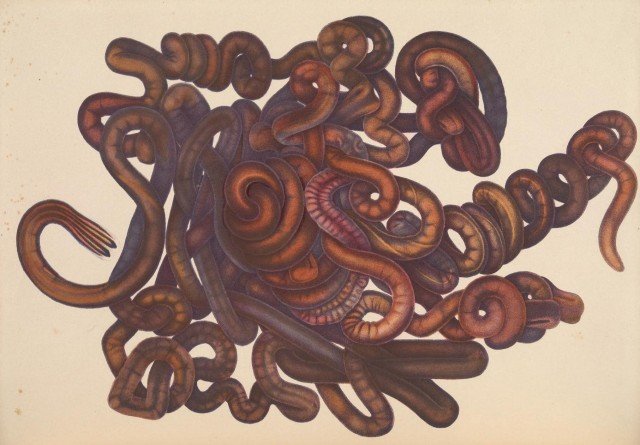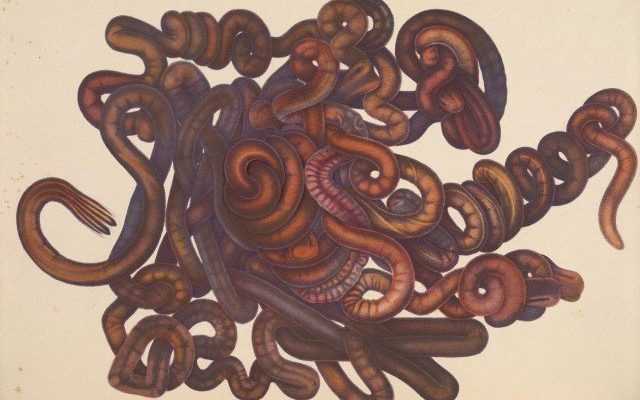
So, what exactly is peristalsis? Well, it’s a fancy term for a process that involves rhythmic contractions of muscles. These contractions help move food through the digestive system in many animals, but bootlace worms take it a step further. Using peristalsis, they propel themselves gracefully through the water. If you’ve ever tried to swim in the ocean, you know that moving through water isn’t always easy! Bootlace worms do it with a unique twist, and understanding this process not only reveals the wonders of nature but also gives us insight into the clever adaptations these creatures have.
What Are Bootlace Worms?
Bootlace worms, scientifically known as *Lineus longissimus*, are some of the longest worms in the world, with some individuals reaching lengths of over 30 meters! These fascinating creatures are usually found in shallow waters along the coasts of Europe, living in mud or sand. Imagine stumbling upon a giant spaghetti noodle in the ocean—yep, that’s a bootlace worm!
These worms have a long, slender body that can seem almost endless, hence the name. Their bodies are made up of many segments, each containing muscle fibers that play a crucial role in their movement. The worms come in a variety of colors, from yellow to brown or even a striking green. This camouflage helps them blend into their surroundings, keeping them safe from predators.
How Does Peristalsis Work?
Peristalsis might sound complicated, but it’s actually pretty straightforward once you break it down. Essentially, it’s all about the worm’s muscles contracting and relaxing in waves along its body. Picture ripples in a pond when you toss in a stone; this is similar to how peristalsis moves through a bootlace worm.
1. **Contraction**: When a segment of the worm’s muscle contracts, it becomes shorter and wider. This action pulls the worm’s body forward.
2. **Relaxation**: Following this contraction, the muscles in the segment behind it relax, allowing the worm to stretch out and move more of its body in the direction it’s heading.
3. **Repeating the Process**: The worm continues contracting and relaxing its muscles in a wave-like motion. This repetition allows the worm to glide smoothly through its watery environment.
It’s a continuous cycle that allows the worm to navigate its habitat effectively, whether it’s searching for food or escaping predators.
Why Is Peristalsis Important for Bootlace Worms?
Peristalsis is crucial for bootlace worms for a few reasons. First off, it’s their main means of locomotion. Without this muscle movement, bootlace worms would struggle to move through the mud and sand where they live.
Additionally, peristalsis aids in feeding. These worms feed on tiny organic particles in the water and sediment, so being able to move efficiently is key to finding food sources. They must wiggle through their environment to catch enough nourishment to survive, and peristalsis makes this possible.
Moreover, the rhythmic movement helps bootlace worms stay safe from predators. As they slink through the water, their long body can twist and turn, allowing them to hide quickly. Think of it like a skilled magician escaping from danger—it’s all about the movement!
Comparing Movement in Bootlace Worms and Other Creatures
When you think about how different animals move, bootlace worms might be a bit unorthodox compared to those with legs or fins. For instance, fish use fins to swim, while bootlace worms rely solely on their muscle contractions. This brings up an interesting point of comparison.
– **Fish**: Fish have streamlined bodies and fins that provide thrust and stability. Their movement is swift, allowing them to cover vast distances quickly.
– **Caterpillars**: Like bootlace worms, caterpillars move through peristalsis but have a more segmented body that allows them to inch along. They can also crawl on surfaces, unlike bootlace worms, which swim.
In contrast, bootlace worms’ elongated bodies make them agile in the water, as their undulations create minimal resistance. This is beneficial for feeding, swimming, and evading predators.
The Adaptability of Bootlace Worms
You might be wondering how bootlace worms thrive in various conditions. Their ability to perform peristalsis gives them the amazing adaptability they need to survive. With the ability to burrow into the sand or swim in open water, they can find shelter and food sources, even if those environments change.
During harsh weather conditions or when water temperatures fluctuate, bootlace worms can slow down their movements and conserve energy. They may even enter a dormant state until the conditions improve. It’s like hitting the snooze button on life, allowing them to go with the flow—literally!
This adaptability is critical for their survival, especially when faced with predators or environmental stressors. Their ability to move efficiently helps them dodge threats while keeping their food sources within reach.
In the end, bootlace worms are a remarkable example of how creatures can adapt and thrive in their environments. Their use of peristalsis for movement is not just a unique trait but a crucial survival strategy. Understanding this process gives us a glimpse into the incredible complexity of life under the waves.
Imagine the next time you see a worm wriggling in the mud or sand; it’s not just flopping around. It’s using muscle contractions to navigate its world. Nature has a way of surprising us, doesn’t it? So next time you think about movement, remember the bootlace worm and its graceful, fluid way of gliding through life. It’s a beautiful dance of survival!

